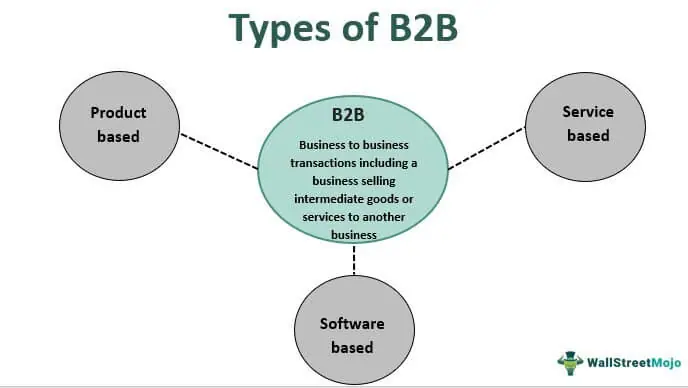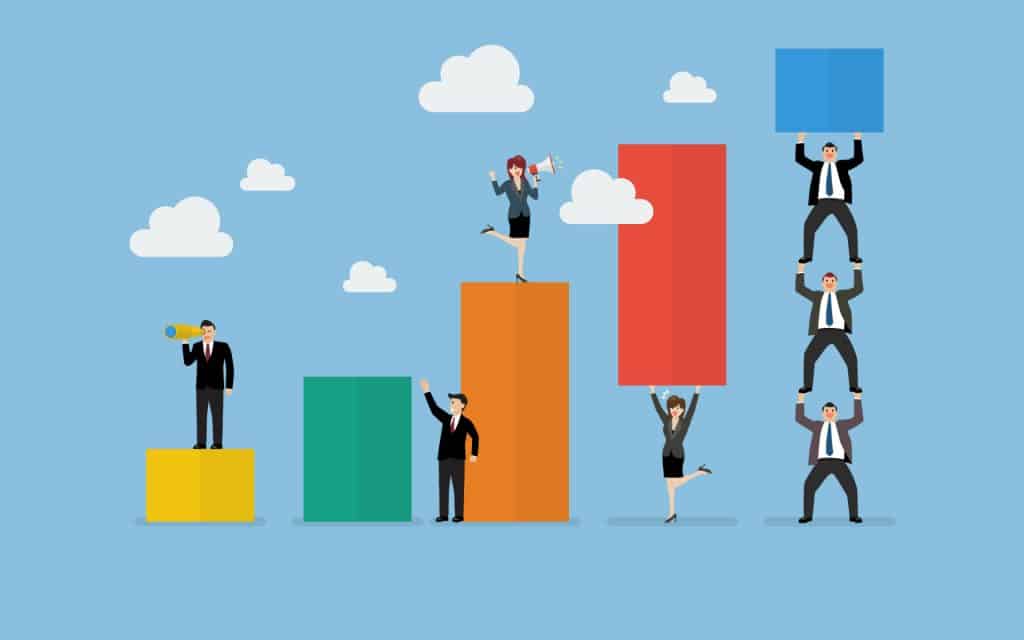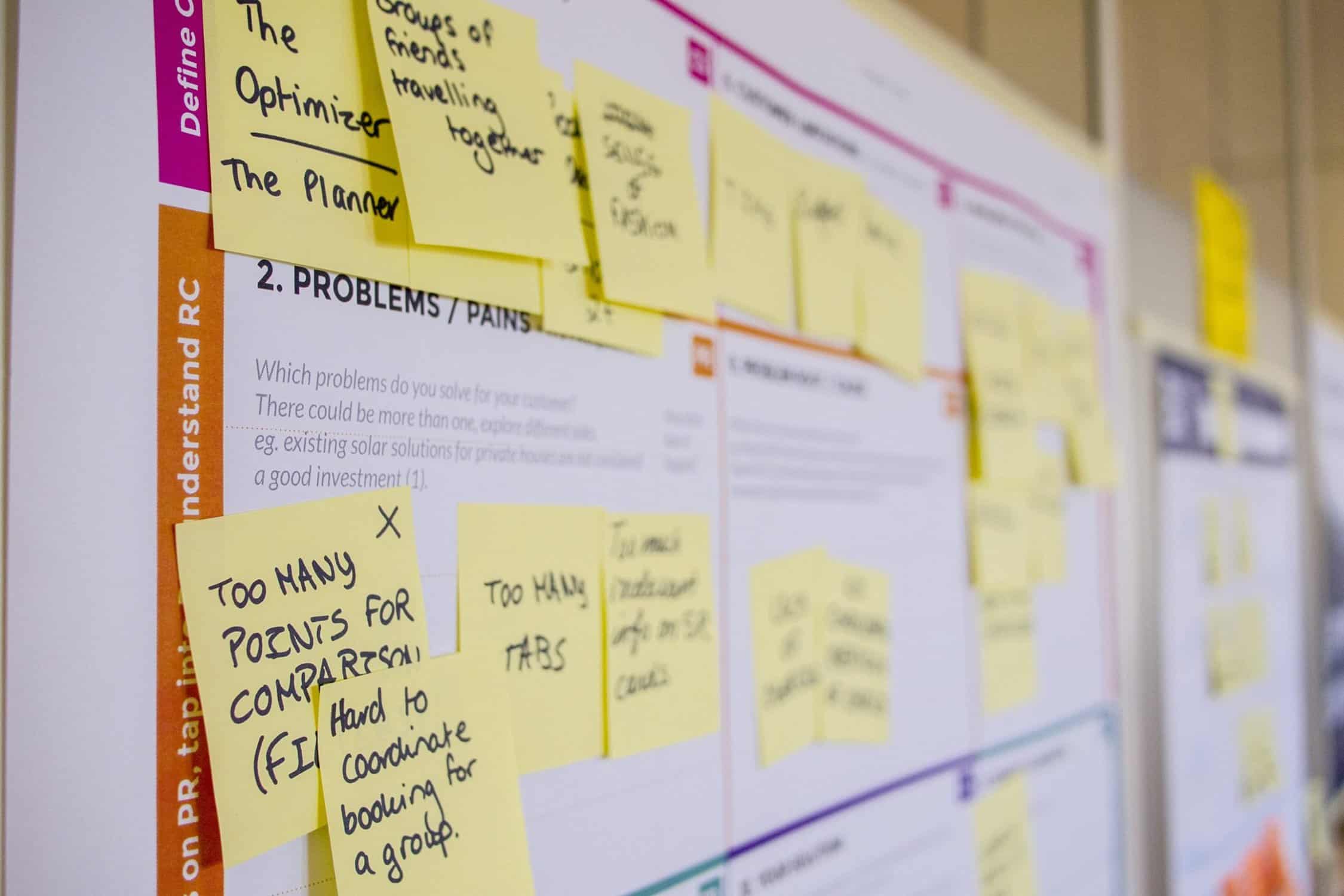Definition of Business-to-Business (B2B)
Business-to-business (B2B) refers to a business model in which companies create products and services for other businesses and organizations. In B2B transactions, the customer is typically another business rather than an individual consumer. Examples of B2B transactions include a manufacturer selling to a wholesaler or a wholesaler selling to a retailer. B2B stands in contrast to business-to-consumer (B2C) transactions, which involve a business selling to individual consumers, and business-to-government (B2G) transactions, which involve a business selling to a government agency. B2B transactions often involve larger quantities and higher-value products or services compared to B2C transactions. B2B marketing and sales strategies may differ from those used in B2C, as the decision-making process and purchasing criteria can be more complex in B2B transactions.
In a typical supply chain, a series of B2B transactions often occur before a product or service is made available to consumers. For example, a manufacturer may purchase raw materials from a supplier, which are then used to produce a finished product. The manufacturer may then sell the finished product to a wholesaler or distributor, who sells it to a retailer. The retailer then sells the product to individual consumers through business-to-consumer (B2C) transactions. B2B transactions play a crucial role in the supply chain, as they allow businesses to acquire the resources and materials they need to produce and distribute their products. B2B transactions also help to streamline the supply chain by allowing businesses to specialize in certain areas and focus on their core competencies rather than trying to handle every aspect of the production process themselves.
B2B communication refers to the exchange of information and ideas between employees of different companies. B2B communication can occur through various channels, such as email, phone, or social media, and is an important way for businesses to build and maintain professional relationships, negotiate contracts, collaborate on projects, and resolve issues. B2B communication can also involve the use of marketing and sales tools, such as presentations, proposals, and demonstrations, to promote products or services to other businesses. In today's digital age, social media platforms and other online communication tools have become increasingly popular for B2B communication. They allow employees to connect easily and collaborate with one another, regardless of location.
Types of Business-to-Business (B2B)
Product-Based B2B Model
The product-based B2B model refers to a type of B2B business in which the company sells physical products to other businesses. In this model, the business acts as a supplier and sells customized products to various other businesses rather than to individual consumers.
Examples of product-based B2B businesses include manufacturers, wholesalers, and distributors. These businesses may produce a wide range of products, such as raw materials, components, and finished goods, which are used in the production process or resold to other businesses.
The product-based B2B model is often used in industries such as manufacturing, construction, and wholesale trade, where businesses need to purchase large quantities of materials and products to use in their operations.
Product-based B2B businesses sell physical products to other businesses rather than providing services. These businesses can have a physical or online presence, or a combination of both. Product-based B2B businesses often face higher upfront and overhead costs compared to service-based B2B businesses, as they typically have to invest in manufacturing, warehousing, and distribution to produce and sell their products. They may also face additional costs related to inventory management and logistics. However, product-based B2B businesses can also have significant advantages, such as the ability to generate recurring revenue through repeat purchases and the potential for higher margins on their products. They may also have more opportunities to differentiate themselves from competitors through product innovation and branding.
Service-Based B2B Model
Service-based B2B businesses offer a range of services to other businesses rather than selling physical products. Some other examples of service-based B2B businesses could include:
- IT support and maintenance services
- Legal services
- Accounting and financial services
- Human resources and recruitment services
- Event planning and management services
- Graphic design and web development services
Service-based B2B businesses often have a strong focus on customer service, as they aim to establish long-term relationships with their clients and help them solve specific problems or challenges. They may also have a more consultative sales process, as they work with clients to understand their needs and develop customized solutions to meet those needs.
Service-based B2B businesses can be easier to scale up compared to product-based B2B businesses, as they typically don't have the same physical manufacturing and distribution costs. In addition, service-based B2B businesses often rely on intangible assets such as knowledge, expertise, and relationships, which can be more easily shared and replicated than physical products. Service-based B2B businesses can be easier to set up and run compared to product-based B2B businesses, as they generally have fewer upfront costs and logistical challenges. However, it's important to note that this can vary depending on the specific service being offered and the market in which the business operates.
Software-Based B2B Model
Software-based B2B businesses can operate under either a product-based or service-based model, depending on the specific products or services they offer.
Specifically, the software-based B2B model can be divided into:
“Product-focused” software-based B2B model
The business sells software products to other businesses in a "product-focused" software-based B2B model. These products may be standalone software applications or integrated software solutions that help businesses automate or streamline specific processes. The business may offer one-time licenses for its software products or subscription-based models that allow businesses to access the software for a set period of time.
“Service-focused” software-based B2B model (SAAS model)
In a "service-focused" software-based B2B model, also known as a SAAS (Software as a Service) model, the business provides software services to other businesses on a subscription basis. This model involves delivering software products over the internet, typically on a monthly or annual subscription basis. The business typically hosts the software and manages all the underlying infrastructure, allowing businesses to access the software through a web browser or app.
Both of these software-based B2B models can be successful depending on the market and the specific software products or services being offered.
Diversification of Business-to-Business (B2B)
Supplier Centric Model
A supplier-centric model is a type of business model where a supplier sets up a marketplace and offers customized solutions to various businesses. The supplier typically prices their solutions according to the client's or buyer's specific needs and requirements.
This type of model can be beneficial for both the supplier and the buyer because it allows the supplier to offer tailored solutions that meet the buyer's specific needs, and it allows the buyer to obtain a solution that is customized to their specific requirements.
To succeed in this model, it is important for the supplier to have a deep understanding of the buyer's needs and preferences and to be able to offer solutions that meet those needs. It is also important for the supplier to have a strong sales and marketing strategy in place to reach potential buyers and build relationships with them.
Buyer Centric Model
This business model is often referred to as a reverse auction or e-auction. In a reverse auction, buyers solicit bids from multiple sellers and then choose the seller that offers the lowest price or best value for their goods or services. This type of business model can be beneficial for both buyers and sellers. It allows buyers to potentially get better prices for the goods or services they need by encouraging competition among sellers. For sellers, it allows them to potentially win business by offering competitive prices and demonstrating the value of their products or services. Reverse auctions can be conducted online or offline and can be used to purchase a wide range of goods and services, including raw materials, finished products, and services such as consulting or maintenance. Large companies or organizations with high purchases often use them and want to optimize their procurement process.
Intermediary Centric Model
Intermediaries in the marketplace, also known as intermediaries or brokers, play an important role in facilitating interactions between buyers and sellers. They provide a platform for buyers and sellers to come together and interact, whether that be through transactions or simply communication. Intermediaries often maintain a database of buyers and sellers, and their main goal is to profit from these associations, either through transaction fees, commissions, or other forms of revenue. Intermediaries can offer a number of benefits to both buyers and sellers. For buyers, intermediaries can provide access to a wider range of products or services and can help them negotiate better prices or terms. For sellers, intermediaries can provide access to a larger pool of potential customers and can help them reach new markets. However, intermediaries can also pose some challenges, such as potential conflicts of interest or the need to share profits with them. It is important for buyers and sellers to consider the role of intermediaries in their business carefully and to choose intermediaries that align with their goals and values.
Challenges of Business-to-Business (B2B)
It can be challenging for B2B companies to find businesses to buy their goods and services, as B2B markets are often smaller and more specialized than consumer markets. However, B2B companies often see higher profits per sale, as businesses tend to have larger budgets and may be willing to pay more for high-quality products and services that meet their specific needs.
The challenges B2B Businesses might face:
B2B companies must consistently innovate while upholding client loyalty
Innovation is crucial for B2B companies to stay competitive in today's marketplace. In today's fast-paced and highly competitive business environment, B2B companies must continually seek ways to improve their products and services to stay relevant and meet the changing needs of their customers. This can include enhancing functionality, improving ease of use, and adding new features or capabilities to their products. By doing so, B2B companies can increase market share and maintain customer loyalty, which are critical to their success. However, it's important for B2B companies to also be mindful of their competitors, who may also be looking to innovate and improve their own products. It's crucial for B2B companies to stay up-to-date on industry trends and developments and to continuously assess the competitive landscape in order to anticipate and adapt to changes in the market. This can help them stay ahead of their competitors and maintain a competitive edge.
B2B must establish a strong online presence
Having a well-designed and maintained website is important for any business, especially B2B companies. A website serves as an online storefront and can be a key source of information for customers and clients. It's important to ensure your website is easy to navigate and provides the information visitors seek.
Search engine optimization (SEO) is a critical factor in helping your website rank highly in search engine results pages (SERPs). By optimizing your website for specific keywords and phrases, you can improve your website's visibility and attract more qualified traffic to your site.
Mobile optimization is also important, as more and more people use their smartphones to access the internet. It's important to ensure your website is mobile-friendly and easy to use on a small screen. This can include using a responsive design that adjusts to the device's size, using large buttons and fonts, and minimizing the use of pop-ups and other distractions.
Creating website content that appeals to visitors at all stages of the sales funnel is important.
At the awareness stage, your content should be focused on educating and informing potential customers about their problems or needs. This could include blog posts, guides, and whitepapers that provide valuable information and help potential customers understand the scope of their problems.
During the investigative stage, your content should focus more on helping potential customers compare and evaluate different solutions and providers. This could include product descriptions, case studies, and customer testimonials that help visitors understand the features and benefits of your products or services.
At the action stage, your content should be focused on helping potential customers take the next step and contact your sales team or make a purchase. This could include calls to action, such as contact forms or "buy now" buttons, as well as information about your sales process and what customers can expect when working with you.
Overall, it's important to create a balanced mix of content that speaks to visitors at all stages of the sales funnel and to use calls to action and other techniques to encourage visitors to take the next step.
B2B businesses must control their cash flow and late payments
Invoice factoring is a financial service in which a company sells its invoices to a third-party finance company, called a factor. The factor advances the company a percentage of the invoice value (usually around 80%) and assumes responsibility for collecting payment from the client. When the client pays the invoice, the factor deducts its fees and any other costs from the remaining amount and remits the remainder to the company.
Invoice factoring can be a useful tool for businesses that have difficulty with timely payment from their clients. It can provide a source of immediate cash flow, which can be especially important for businesses that rely on a small number of large invoices. However, it's important to carefully consider the potential drawbacks of invoice factoring, such as the cost of the service and the potential impact on your relationships with your clients.
Advantages of Business-to-Business (B2B)
A large order value and volume
B2B (business-to-business) sales often involve higher-value orders and longer sales cycles than consumer sales. B2B companies may sell products or services in bulk to other businesses rather than to individual consumers. This can result in larger orders and potentially higher revenue per sale compared to consumer sales.
Higher rates of conversion
Business-to-Business (B2B) marketing refers to marketing efforts aimed at promoting products or services to other businesses rather than to individual consumers. B2B marketing can be different from consumer marketing in several ways, including the target audience, the types of products and services being marketed, and the marketing tactics used. In general, B2B marketing can be more targeted and efficient compared to consumer marketing. Businesses often have a clear understanding of their target audience, and marketing efforts can be focused on reaching the right decision-makers within those businesses. This can result in a higher conversion rate, as businesses may be more likely to make a purchase decision based on a clear understanding of the product or service and its value. On the other hand, Direct-to-Consumer (DTC) marketing involves promoting products or services directly to individual consumers. This can be a more challenging and costly endeavor, as it involves reaching a larger, more diverse audience and may require more marketing resources to be effective. Overall, the success of any marketing efforts depends on a variety of factors, including the target audience, the product or service being marketed, and the marketing tactics used. Both B2B and DTC marketing can be effective, but it's important to carefully consider the target audience and marketing strategy in order to maximize the chances of success.
Stronger relationships
Building lasting relationships with business consumers can be easier than building relationships with individual customers because businesses often have more consistent and longer-term needs. It can also be easier to establish trust and a working relationship as there are often more decision-makers and established processes in place. One way to find potential business clients is to research and identify companies that work in industries or sectors that align with your products or services. For example, if you offer hospitality software, you could consider reaching out to hotels, restaurants, and other businesses in the hospitality industry. Similarly, if you offer wholesale products, you could consider using a wholesale directory to find potential clients, or you could research and identify companies that might be interested in purchasing your products in bulk. In addition, you could also consider networking with industry professionals, attending trade shows or industry events, or partnering with complementary businesses to reach new potential clients. It's important to be proactive and take steps to identify and reach out to potential clients in order to grow your business.
Streamlined business structure
Selling to businesses can indeed be simpler in some ways because the decision-making process is often more structured, and there are often clear communication channels in place. However, it can also be more complex because businesses have specific needs and may have more stringent requirements for the products or services they purchase.
Disadvantages of Business-to-Business (B2B)
Slow buying decisions
B2B sales can often take longer than B2C (business-to-consumer) sales because more stakeholders are typically involved in the decision-making process. B2B sales often involve higher ticket items and longer-term contracts, so it is important for companies to thoroughly research and evaluate their options before making a purchasing decision.
Limited market base
There are generally fewer businesses than individual consumers in the world. However, businesses often have larger budgets and can make larger purchases, so it is important to consider both B2B (business-to-business) and B2C (business-to-consumer) sales when developing a marketing and sales strategy. It is also important to understand that losing even a single customer can have a significant impact on a business, especially if the customer is a large or repeat customer. That is why it is important to focus on customer retention and ensure that customers are satisfied with the products or services they receive.
Inverted structure of power
In the B2B (business-to-business) model, the buyer often holds a significant amount of power because they make purchasing decisions on their company's behalf. They may have specific requirements or preferences that the business must meet in order to make the sale. Businesses need to understand the needs and preferences of their potential B2B customers and be flexible and responsive to their requests. This can involve making changes to the sales process or offering customized solutions.
Extremely competitive
Competition can be fiercer in the B2B (business-to-business) model because there are generally fewer potential customers. In order to stand out, it is important to offer high-quality products or services and provide superior customer service.
Difficult to predict
Both manufacturers and resellers can encounter issues with demand forecasting in the B2B (business-to-business) model. This is because the shorter inventory cycle in B2B sales can make it more difficult to forecast demand accurately. Overestimating demand can lead to excess inventory, also known as dead stock, which can tie up resources and reduce profitability. On the other hand, underestimating demand can result in stock shortages, leading to lost sales and customer dissatisfaction.
Conclusion
In the business-to-business (B2B) model, a company provides products or services to other businesses rather than to individual consumers. B2B transactions are typically more complex and involve larger quantities and higher values than business-to-consumer (B2C) transactions. B2B companies often operate in specialized industries and have a deep understanding of their customer's needs and requirements.
Some examples of B2B companies include manufacturers that sell their products to other businesses, wholesalers that distribute products to retailers, and service providers that offer consulting, marketing, or other services to other businesses. B2B companies may also provide support and resources to their customers, such as training, technical support, and marketing materials.
One key advantage of the B2B model is that it allows businesses to focus on their core competencies and outsource other tasks or needs to specialized providers. This can help businesses streamline their operations, reduce costs, and improve efficiency. Additionally, B2B relationships can be more long-term and stable than B2C relationships, which can provide a reliable source of revenue for B2B companies.
References
What is Business-to-Business (B2B)
Types of Business-to-Business (B2B)
Diversification of Business-to-Business (B2B)








